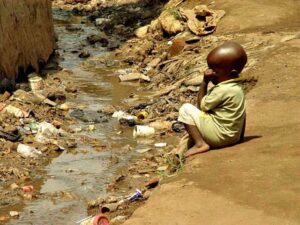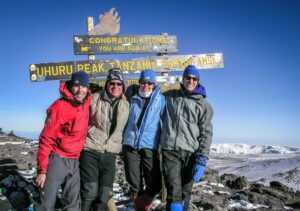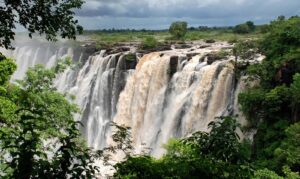Most Interesting Facts About Africa – There are so many positive facts about the African continent floating around the Internet, so here’s an attempt to increase the number of these positive writings on the continent. Of course I mean the 100+Most Interesting Facts About Africa That Will Amaze You. Let me start by adding to your perceptions about Africa today!
Africa is considered by many scientists to be the origin of mankind, Africa is a continent of 54 independent countries and a rich mix of native peoples, cultures, economies and history.
One among these 100+Most Interesting Facts About Africa is that, Africa is the world’s most natural-resources rich continent.
Colonialism and neo-colonialism are the only reasons the African continent isn’t ruling the world, although it technically is because the rest of the world would plummet into eternal doom if Africa closed its borders.
May 25 is Africa Day, a holiday originally created to celebrate the foundation of the Organization of African Unity (now known as the African Union) on May 25, 1963. In honor of the commemoration African Union, here are 100+Most Interesting Facts About Africa That Will Amaze you:
Contents
Amazing Facts About Africa
- Continent Size: Second largest in the world
- Area: 11,700,000 square miles
- Estimated population: 877 million people
- Largest City: Cairo, Egypt, 9.2 million people
- Largest Country: Algeria – 919,595 square miles (was Sudan, 968,000 square miles)
- Longest River: Nile, 4,160 miles
- Largest Lake: Victoria, 26,828 square miles
- Tallest Mountain: Kilimanjaro, Tanzania, 19,340 feet
Most Uninteresting Facts About Africa
The African continent has been suffering more and more from climate change in recent decades: devastating floods and extraordinary drought periods lead to crop failures.
The consequences are regular hunger crises and famine in Africa. Particularly affected are East Africa and the Sahel region. Here’s the list of Uninteresting facts about Africa:
- Seventy-five percent of the world’s poorest countries are located in Africa, including Zimbabwe, Liberia and Ethiopia. The Central African Republic ranked the poorest in the world with a GDP per capita of $656 in 2016.
- According to Gallup World, in 2013, the 10 countries with the highest proportion of residents living in extreme poverty were all in sub-Saharan Africa. Extreme poverty is defined as living on $1.25 or less a day. In 2010, 414 million people were living in extreme poverty across sub-Saharan Africa. According to the World Bank, those living on $1.25 a day accounted for 48.5 percent of the population in that region in 2010.
- Approximately one in three people living in sub-Saharan Africa are undernourished. The Food and Agriculture Organization (FAO) of the United Nations estimated that 239 million people (around 30 percent of the population) in sub-Saharan Africa were hungry in 2010. This is the highest percentage of any region in the world. In addition, the U.N. Millennium Project reported that over 40 percent of all Africans are unable to regularly obtain sufficient food.
- In sub-Saharan Africa, 589 million people live without electricity. As a result, a staggering 80 percent of the population relies on biomass products such as wood, charcoal and dung in order to cook.
- Of the 738 million people globally who lack access to clean water, 37 percent are living in sub-Saharan Africa. Poverty in Africa results in more than 500 million people suffering from waterborne diseases. According to the U.N. Millennium Project, more than 50 percent of Africans have a water-related illness like cholera.
- Every year, sub-Saharan Africa misses out on about $30 billion as productivity is compromised by water and sanitation problems. This amount accounts for approximately five percent of the region’s gross domestic product (GDP), exceeding the total amount of foreign aid sent to sub-Saharan Africa in 2003.
- Due to continuing violence, conflict and widespread human rights abuses, the United Nations High Commissioner for Refugees (UNHCR) reports that 18 million people are of concern to the agency, including stateless people and returnees.
- Fewer than 20 percent of African women have access to education. Uneducated African women are twice as likely to contract AIDS and 50 percent less likely to immunize their children. Meanwhile, the children of African women with at least five years of schooling have a 40 percent higher chance of survival.
- Women in sub-Saharan Africa are more than 230 times more likely to die during childbirth or pregnancy than women in North America. Approximately one in 16 women living in sub-Saharan African will die during childbirth or pregnancy; only one in 4,000 women in North America will.
- More than one million people, mostly children under the age of five, die every year from malaria. Malaria deaths in Africa alone account for 90 percent of all malaria deaths worldwide. Eighty percent of these victims are African children. The U.N. Millennium Project has calculated that a child in Africa dies from malaria every 30 seconds, or about 3,000 each day.
Most Interesting Facts About Africa
- There are 54 countries and one “non-self governing territory”, the Western Sahara, in Africa.
- All of Africa was colonized by foreign powers during the “scramble for Africa”, except Ethiopia and Liberia.
- Before colonial rule Africa comprised up to 10,000 different states and autonomous groups with distinct languages and customs.
- The Pharaonic civilization of ancient Egypt is one of the world’s oldest and longest-lasting civilizations.
- African continent is the world’s oldest populated area.
- Arabic is spoken by 170 million people on the continent, followed in popularity by English (130 million), Swahili (100), French (115), Berber (50), Hausa (50), Portuguese (20) and Spanish (10).
- Over 25% all languages are spoken only in Africa with over 2,000 recognised languages spoken on the continent.
- Africa is the second most populous continent with about 1.1 billion people or 16% of the world’s population. Over 50% of Africans are under the age of 25.
- The continent’s population will more than double to 2.3 billion people by 2050.
- Africa is the world’s poorest and most underdeveloped continent with a continental GDP that accounts for just 2.4% of global GDP.
- Almost 40% of adults in Africa are illiterate – two-thirds are women. Adult literacy rates are below 50% in Benin, Burkina Faso, Chad, Ethiopia, Guinea, Mali, Niger, Senegal, Sierra Leone and The Gambia.
- Over 25 million people are HIV-positive on the continent and over 17 million have died of the disease already.
- The Second Congo War claimed over 5.4 million lives and is the deadliest worldwide conflict since World War II.
- There are fewer people with internet connections in Africa than there are in just New York City.
- Approximately 90% of all cases of malaria worldwide occur in Africa, accounting for 24% of all child deaths in sub-Saharan Africa.
- Africa is the world’s second largest continent covering about over 30 million square kilometers
- The Sahara is the largest desert in the world and is bigger than the continental USA.
- Africa is the world’s hottest continent with deserts and drylands covering 60% of land surface area (e.g. Kalahari, Sahara and Namib).
- Africa is the world’s second driest continent (after Australia).
- Africa has approximately 30% of the earth’s remaining mineral resources.
- Nigeria is fourth largest oil exporter in the world, and Africa’s biggest oil producer with about 2.2 million barrels produced every day. Top 10 oil producers in order of total exports: Nigeria, Algeria, Angola, Libya, Egypt, Sudan, Equatorial Guinea, Republic of Congo, Gabon, South Africa.
- The continent has the largest reserves of precious metals with over 40% of the gold reserves, over 60% of the cobalt, and 90% of the platinum reserves.
- China is Africa’s top trade partner with Sino-African trade volumes now nearing $200 billion per year.
- China’s direct investment in Africa exceeds $50 billion. Just look at the “Forum on China Africa Cooperation”.
- Neocolonialism is a real threat with over 1 million Chinese citizens on the African continent. Angola alone has a population of over 350,000 Chinese.
- Over 55% of Africa’s labour force working in food production with vast areas of arable and pastoral lands supporting agricultural economies.
- Over 90% of soils are unsuitable for agriculture and only 0.25% has moderate to low potential for sustainable farming.
- Rainfall variability is very high – from 0 mm/year in the Sahara to 9,500 mm/year near Mount Cameroon.
- Over 240 million Africans suffer from chronic undernourishment.
- Water scarcity impacts the lives of over 300 million Africans, of whom approximately 75% of Africans rely on groundwater as their primary source of drinking water. Global warming is aggravating the situation.
- Limited groundwater represents only 15% of the continent’s total renewable water resources. New discoveries of groundwater reserves in large sedimentary basins in Libya, Algeria and Chad may slack Africa’s growing thirst for the next few decades…
- Productivity of about 65% of the continent’s agricultural lands has declined significantly with vast tracts of land have been degraded by erosion, poor land management practices, mining and pollution over the last 50 years.
- Some landscapes are estimated to lose over 50 metric tonnes of soil per hectare per year due to neglect and desertification.
- Over 30% of Africa’s pastural land and almost 20% of all forests and woodlands are classified as moderately- or heavily-degraded.
- Deforestation rates in Africa are twice the average for the rest of the world with more than four million hectares of primary forest disappearing every year. Countries like Kenya, malawi and Zambia have 1-5% of the primary forests remaining. Forests used to cover over 20% of Africa’s 30 million square kilometers with almost all currently being destroyed and degraded by commercial and subsistence logging, as well as land conversion to plantations, agriculture, mines, roads and settlements.
- Some 60% of the tropical forests in the Congo Basin are considered commercially exploitable.
- Six of the top ten countries with the largest annual net loss of forested area are in Africa.
- Primary forests shrink by on average 40,000 square kilometres (or 0.6% of total remaining forest cover) each year with most significant losses in heavily-forested countries such as the Democratic Republic of Congo and Gabon.
- Over 1,270 large dams have been built along the continent’s many rivers.
- Lake Victoria is the largest lake in Africa and the second-largest freshwater lake in the world.
- Africa has the most extensive biomass burning in the world, yet only emits about 4% of the world’s total carbon dioxide emissions.
- Africa has eight of the 11 major biomes and the largest-remaining populations of lion, elephant, rhinoceros, cheetah, hyena, leopard and hundreds of other species.
- Megafauna like giraffe, zebra, gorilla, hippopotamus, chimpanzee and wildebeest are unique to the continent and only found here.
- Lake Malawi has more fish species than any other freshwater system on earth.
- The Nile River is the longest river in the world with a total length of 6,650 kilometres.
- Africa has over 85% of the world’s elephants and over 99% of the remaining lions are on the African continent.
- Eight of Conservation International’s 34 biodiversity hotspots are in Africa.
- The Serengeti (Tanzania) hosts the world’s largest wildlife migration on Earth with over 750,000 zebra marching ahead of 1.2 million wildebeest as they cross this amazing landscape.
- Thera are over 3,000 protected areas in Africa, including 198 Marine Protected Areas, 50 Biosphere Reserves, 129 UNESCO World Heritage Sites, and 80 RAMSAR “Wetlands of International Importance”.
- Africa is home to the world’s largest living land animal, the African elephant, which can weigh up to 7 tons.
- Africa has over 25% of the world’s bird species.
Good Facts About Africa
• One of the most interesting facts about Africa is that the length and breadth of this continent are about the same. It measures around 4,660 from north to south and from east to west.
• Africa is not only the second largest but the second most populated continent as well and houses about 12% of the world population.
• Nigeria is the most populated country in Africa and has an estimated population of 120-140 million. The population in Seychelles is around 80,000 people and is the least populated country.
• The African continent has approximately 3,000 distinct ethnic groups while Nigeria alone has about 370 of these tribes that have been officially recognized. You will find more information on African culture here.
• Around 2,000 different languages are spoken in Africa and each of them have different dialects while Arabic is the language that is most widely spoken in the African continent.
• The Equator goes around 2,500 miles from the west to the east of the African continent thus dividing this continent into two separate halves – north and south. It passes through many of the African nations such as Congo, Somalia, Uganda as well as Kenya.
• If we go by the records of the fossil remains Africa seems to be the first continent where humans were found. The fossil remains have suggested that humans had inhabited the African continent around 7 million years ago.
• Africa also boasts of having the longest river in the world which is the Nile that runs for around 4,150 miles before it meets the ocean. It flows through several African countries such as Ethiopia, Sudan, Uganda as well as Egypt thus making the land extremely fertile.
Our Africa Facts for Kids
As part of the 100+Most Interesting Facts About Africa That Will Amaze You, – Here’s our Africa Facts for Kids that will bring you lots of interesting and fun facts on the African continent.
1. Countries In Africa
There are 54 countries in Africa – and 9 territories –with a total of more than 1.1 billion people living on the continent, which is 15% of the world’s total population.
2. Largest Country:
Algeria. This country is among the ten largest countries in the world. The most populous country in Africa, however, is Nigeria, with more than 185 million people, but the country is only a third of the size of Algeria.
3. Largest City:
Lagos in Nigeria. With more than 21 million inhabitants, Lagos is also one of the biggest metropolitan cities in the world and is estimated to become the world’s largest city by 2100.
4. Smallest Country:
Seychelles, which is an archipelago (nation of islands) in the Indian Ocean. On the African mainland, the smallest country is The Gambia. Read our Seychelles Facts here.
5. Biggest Island:
Madagascar in the Indian Ocean. Madagascar is the fourth largest island in the world (after Greenland, New Guinea and Borneo).
6. Longest River:
The Nile is the longest river in the world and passes through eleven countries. The Nile has two sources: The White Nile coming from Lake Victoria in Tanzania and the Blue Nile coming from Lake Tana in Ethiopia. The river mouth is in Egypt. The confluence in Khartoum/Sudan.
7. Highest Mountain:
Mount Kilimanjaro in Tanzania. The highest peak of the mountain ‘Kibo’, is called ‘Uhuru Peak’, (5895 m/ 19340 ft) is located in the Tanzanian highlands.
8. Biggest Lake:
Lake Victoria (bordering Uganda, Tanzania and Kenya) is also the world’s second largest freshwater lake. Only Lake Superior in North America is bigger!
9. Driest Place:
The Sahara in northern Africa is the largest hot desert in the world. The climate is extremely dry (arid) in this region.
10. Landlocked Countries
There are sixteen landlocked countries in Africa. Two tiny countries, Swaziland and Lesotho, are located within South Africa.
These countries are all located in the interior of the continent and have neither access to the Atlantic Ocean nor to the Indian Ocean. Two of these countries, the tiny countries, Swaziland and Lesotho, are located within South Africa.



